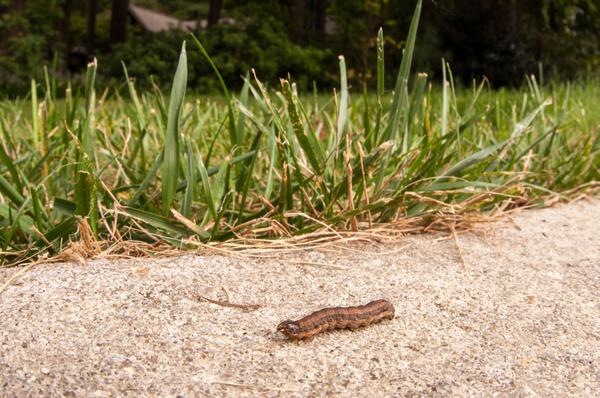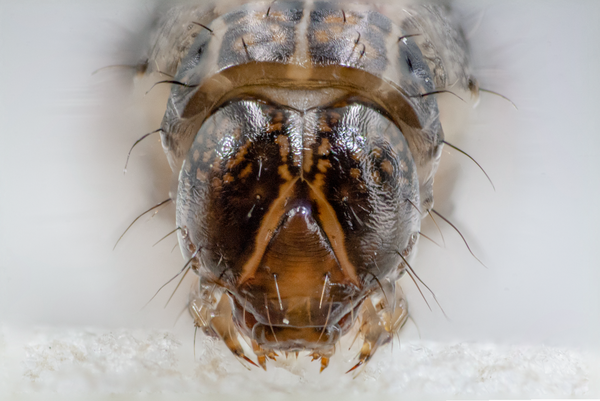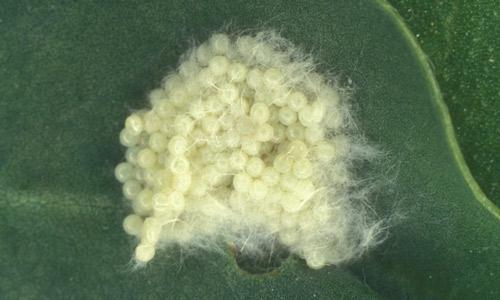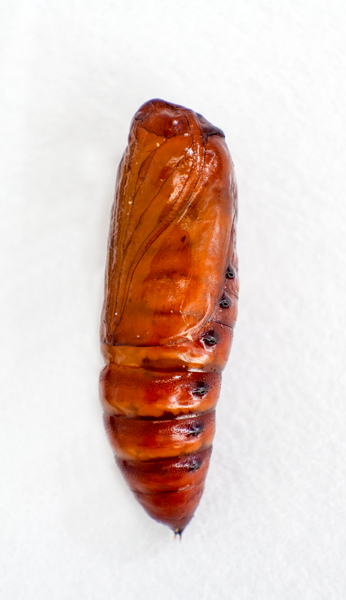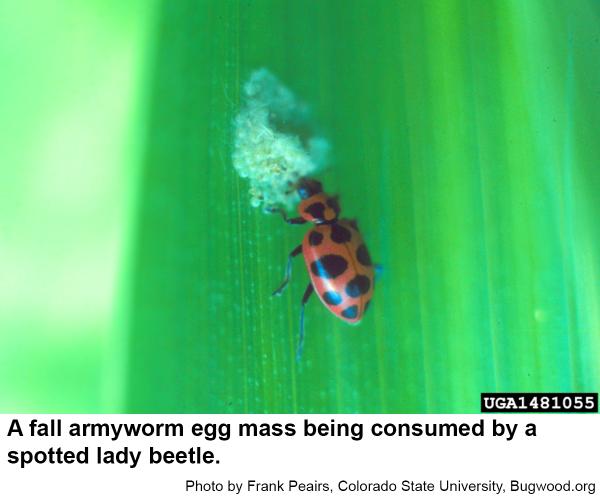Fall Armyworms in Turf
en Español / em Português
El inglés es el idioma de control de esta página. En la medida en que haya algún conflicto entre la traducción al inglés y la traducción, el inglés prevalece.
Al hacer clic en el enlace de traducción se activa un servicio de traducción gratuito para convertir la página al español. Al igual que con cualquier traducción por Internet, la conversión no es sensible al contexto y puede que no traduzca el texto en su significado original. NC State Extension no garantiza la exactitud del texto traducido. Por favor, tenga en cuenta que algunas aplicaciones y/o servicios pueden no funcionar como se espera cuando se traducen.
Português
Inglês é o idioma de controle desta página. Na medida que haja algum conflito entre o texto original em Inglês e a tradução, o Inglês prevalece.
Ao clicar no link de tradução, um serviço gratuito de tradução será ativado para converter a página para o Português. Como em qualquer tradução pela internet, a conversão não é sensivel ao contexto e pode não ocorrer a tradução para o significado orginal. O serviço de Extensão da Carolina do Norte (NC State Extension) não garante a exatidão do texto traduzido. Por favor, observe que algumas funções ou serviços podem não funcionar como esperado após a tradução.
English
English is the controlling language of this page. To the extent there is any conflict between the English text and the translation, English controls.
Clicking on the translation link activates a free translation service to convert the page to Spanish. As with any Internet translation, the conversion is not context-sensitive and may not translate the text to its original meaning. NC State Extension does not guarantee the accuracy of the translated text. Please note that some applications and/or services may not function as expected when translated.
Collapse ▲Description
Fall armyworms are approximately 1-1½ inches long, depending on instar, and can vary in color from a green to mottled brown, to almost black (Figure 1). Fall armyworms have wide black stripe running down each lateral (side) of the body. Sometimes, you will be able to distinguish four black dots on the dorsal (back) side of each segment of the abdomen and a light-colored, upside-down “Y” marking on the head capsule (Figure 2). Fall armyworms, similar to some other immatures of moth species, have four pairs of prolegs attached to the abdomen. Adult moths are more difficult to distinguish from other species. Each moth has a wingspan of approximately 1-1½ inches, the hind wings are white (same as cutworms) but the fore (front) wings have a noticeable white spot near the center of the wing (Figure 3).
Pest Status
Fall armyworms have a very wide host range but generally prefer plants in the grass (Poaceae) family, low-growing herbaceous growth and woody shrubs. Most grasses, including coastal bermudagrass, fescue, ryegrass, bluegrass, Johnsongrass, timothy, corn, sorghum, Sudangrass, and small grain crops, are subject to infestation.
Biology
Fall armyworms that attack turf in North Carolina likely overwintered as pupae in Florida. As the adults emerge from their pupal cases, they migrate northward throughout the spring and summer. Fall In mid-summer (July), female moths lay eggs in clusters on the surface of most kinds of vegetation (Figure 4). They will also lay eggs on flat surfaces of neighboring structures (posts, signs, buildings). One moth can lay as many as 1,000 eggs which hatch within 2-10 days. As the eggs hatch, the larvae feed on the remains of the egg mass then drop to the soil surface to search for food. Unlike other caterpillar species, fall armyworms will feed day or night, but are usually most active early in the morning or late in the evening. In large populations, fall armyworms can consume all the foliar tissue available and crawl in “armies” to nearby crops or turf stands. After the larvae feed for 2-3 weeks, they dig into the soil and pupate (Figure 5). Within two weeks, a new population of moths emerges. Several generations occur each year in North Carolina and earlier infestations tend to occur following a mild winter.
Damage
Although armyworms may be better known as agricultural crops pests, they can be a sporadic but serious pest of turfgrasses. Fall armyworm damage in turfgrass is very distinctive. Since armyworms cross the turf surface as a group, they create a noticeable line between damaged and undamaged turfgrass. Usually damaged areas will originate around a site where egg masses can be easily laid (signposts, buildings) and radiate outward. Although fall armyworms do not have many specific preferences, newly-installed sod is more attractive and more susceptible to damage.
Control
Biological Control
Often, natural enemies can keep fall armyworm populations in check (Figure 6). However, cold, wet springs can reduce the effectiveness of parasitic organisms and cannot effectively control large armyworm populations.
Chemical Control
Fall armyworms can be more difficult to control than other caterpillar pests (true armyworms, black cutworms). When possible, mow and lightly irrigate the turf prior to treating. Insecticides are generally ineffective against large larvae so be sure to note the size of the armyworms before making an application. Large larvae are likely to finish feeding and burrow into the soil to pupate so only treat if larvae are relatively small. Pyrethroids (particularly lambda-cyhalothrin) and carbamates (carbaryl), will provide somewhat effective control against smaller larvae. Chlorantraniliprole will also control turf-feeding caterpillars, if applied very early. For specific control information, consult your local Cooperative Extension center for recommendations.
| Insecticide and Formulation | Amount per 1,000 sq ft | Precaution and Remarks |
|---|---|---|
| acephate* (Orthene, T, T&O) | 0.5 to 1.2 oz | Water in immediately after application. |
| chlorantraniliprole (Acelepryn) | 0.046 to 0.092 fl oz | |
| chlorpyrifos* (Dursban) 4 E, 2 E, 50WP, Pro | See label | For use on golf courses; check new label. |
| indoxacarb (Provaunt) SC | 0.0625 to 0.25 fl oz | Not labeled for use on sod farms. |
| pyrethroids* (Advanced Garden, Battle, Deltagard, Menace, Scimitar, Talstar, Tempo, Cyonara) | See label | |
| spinosad A + D (Conserve) SC | 1.25 fl oz | Rate varies with size and species |
References
- Common name: fall armyworm, scientific name: Spodoptera frugiperda (J.E. Smith) (Insecta: Lepidoptera: Noctuidae). John L. Capinera, J. L. 2017 (revised). Entomology & Nematology, FDACS/DPI, EDIS Publication Number: EENY-98.
- Fall Armyworm (Lepidoptera: Noctuidae) Resistance in Texas Bluegrass, Kentucky Bluegrass, and Their Hybrids (Poa spp). Reinert, J. A. and J. C. Read. 2008. Florida Entomologist 91 (4): 592-597.
- Review of Fall Armyworm (Lepidoptera: Noctuidae) Genetic Complexity and Migration. Nagoshi, R. N. and R.L. Meagher. 2008. Florida Entomologist, 91(4):546-554.
- 2018 Pest Control for Professional Turfgrass Managers. Bowman, D. et al. 2017. NC State Extension Publication AG-408. 81 pp.
- NC State Extension Plant Pathology Publications and Factsheets
- NC State Horticultural Science Department Publications
- North Carolina Agricultural Chemicals Manual
For assistance with a specific problem, contact your local Cooperative Extension center.



